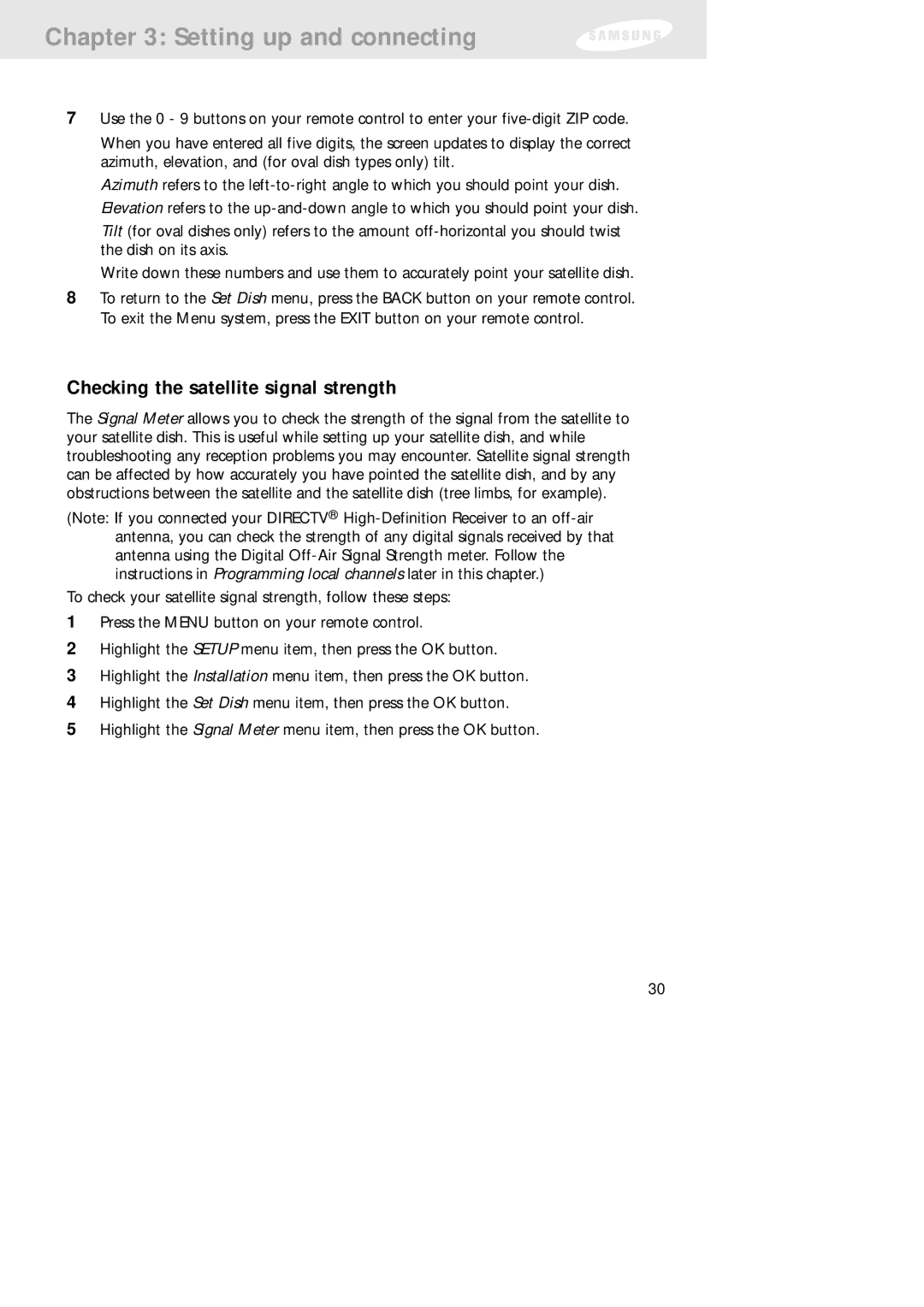
Chapter 3: Setting up and connecting
7Use the 0 - 9 buttons on your remote control to enter your
When you have entered all five digits, the screen updates to display the correct azimuth, elevation, and (for oval dish types only) tilt.
Azimuth refers to the
Tilt (for oval dishes only) refers to the amount
Write down these numbers and use them to accurately point your satellite dish.
8To return to the Set Dish menu, press the BACK button on your remote control. To exit the Menu system, press the EXIT button on your remote control.
Checking the satellite signal strength
The Signal Meter allows you to check the strength of the signal from the satellite to your satellite dish. This is useful while setting up your satellite dish, and while troubleshooting any reception problems you may encounter. Satellite signal strength can be affected by how accurately you have pointed the satellite dish, and by any obstructions between the satellite and the satellite dish (tree limbs, for example).
(Note: If you connected your DIRECTV®
To check your satellite signal strength, follow these steps:
1Press the MENU button on your remote control.
2Highlight the SETUP menu item, then press the OK button.
3Highlight the Installation menu item, then press the OK button.
4Highlight the Set Dish menu item, then press the OK button.
5Highlight the Signal Meter menu item, then press the OK button.
30
